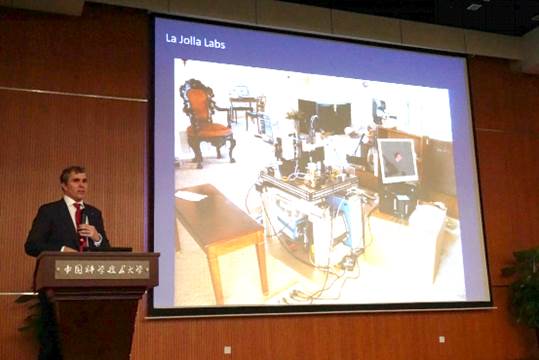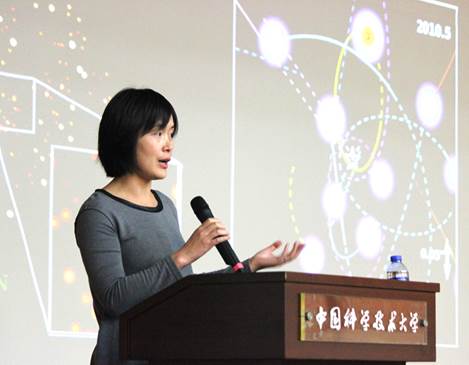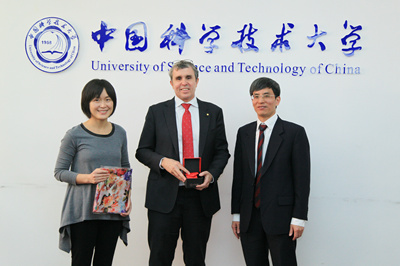Nobel Laureate Dr. Eric Betzig visited USTC, accompanied by his wife Dr. JI Na, one of our outstanding alumnae and gave impressive lectures on biological imaging on March 28. The event was hosted by XUE Tian, the Executive Director of the School of Life Sciences.
During the speech Dr. Betzig shared with the audience his research experience in developing super high resolution optical imaging methods for living cells. He started research in this area since graduate school. In his early career, Dr. Betzig invented the Near-field Scanning Optical Microscope (NSOM), which imaged samples beyond diffraction limit. However, after realizing its fundamental limitations, he ceased the research. After a ten-year break away from academia, In 2006 he collaborated with his research partner Harald Hess and built PALM, a high resolution single-molecule microscopy, using photo switchable fluorescence proteins. He then further developed state-of-the-art Structured Illumination Microscopy (SIM) and lattice light sheet methods, which enabled fast and super high resolution imaging of live cells, marking a major breakthrough in imaging technology. In 2014, he was awarded the Nobel Prize in Chemistry jointly with Stefan W. Hell and William E. Moerner for their contribution to the development of super-resolved fluorescence microscopy.

His life experience and persistent efforts in scientific research fascinated the audience. After the invention of NSOM, he found its fundamental limitations for living cell imaging. As there were no promising solutions to these shortcomings, he quit science and worked in his father’s machine manufacturing company for ten years. There he spent four years to build his own machine and three years to sell it. Unfortunately, his machine was not popular on market. Already 42 and unemployed, he traveled all over the country with his friend Harald Hess. They talked about the meaning of life on their journeys and encouraged each other, and decided that to explore the unknown was exactly what they wanted to do. So they started to look for new approaches for better bio-sample imaging. The prototype of their photo activated localization microscopy, which led to the winning of the Nobel Prize in 2014, was first built in Harald Hell’s living room.

Throughout the lecture, Dr. Betzig impressed the audience with a good sense of humor. When talking about the research experience he said, ”You invested so much in initial technology that they became your baby. And just like your actual physical baby, when it’s born you think it’s going to either cure cancer or become President, and in the end you just hope he stays out of jail.”

Dr. JI Na, the wife of Dr. Betzig, introduced the application of the latest optical imaging techniques to brain study. The audience was interested to see that deep brain areas in mice can be imaged using the adaptive optics and microscope technology. JI Na was an undergraduate of USTC and recipient of the top GUO Moruo Prize when she graduated.
Vice President CHEN Chusheng had a meeting with Dr Betzig and JI Na at the same day to welcome the outstanding couple.

( LI Xiaorun&HUANG Jun, ENGLISH NEWS CENTER)